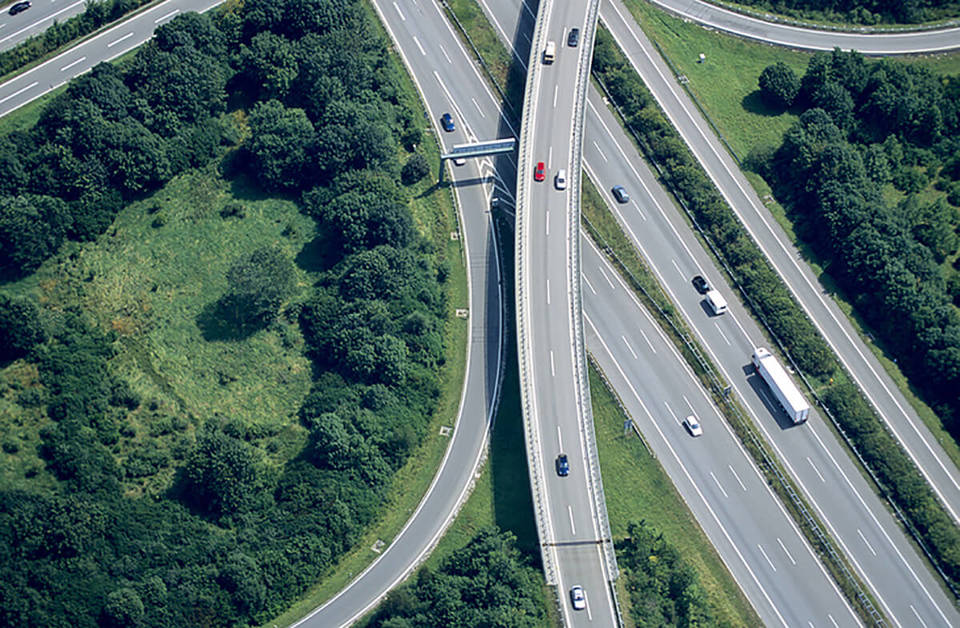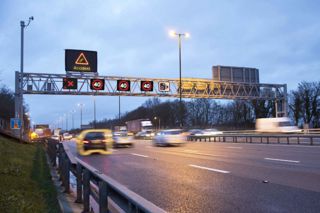Providing drivers with more real-time, personalised information on congestion and the availability of electric vehicle (EV) charge points are among a raft of proposals in a new National Highways report.
The Strategic Road Network Initial Report for 2025-2030 sets out National Highways’ advice to Government on priorities for the strategic road network (SRN).
The 4,500-mile network carries around four million vehicles a day and National Highways’ work is likely to increasingly focus on making the most of its existing network through proactive maintenance and improvement works.
This includes through greater use of digital technologies, getting the network ready for connected and autonomous vehicles and encouraging active travel.
The report also outlines the challenges facing these increasingly busy roads and how investment can help tackle congestion and smooth traffic flow.
Most motorways were built in the 1960s and 70s and now require extensive renewal while National Highways also needs to ensure performance and safety levels are maintained in the face of increased exposure to severe weather.
The Initial Report will be subject to an eight-week consultation by the Department for Transport (DfT).
It is published alongside National Highways’ long-term strategic plan, Connecting the Country. This sets out the company’s priorities for the network up to 2050, with demand for roads from zero-emission vehicles expected to remain strong as part of a seamlessly integrated transport system.
Separately, 20 Route Strategies have also been published, which help develop and maintain a detailed evidence base on the performance of the network – identifying current issues and understanding potential future challenges.
Alongside this, National Highways publishes its new Environmental Sustainability Strategy, which sets out the company’s long-term vision to manage roads in a more sustainable way, ensuring the network can be used as a force for good.
Proposals outlined in the initial report, include providing road users with more real-time and personalised information covering congestion, on-going incidents, planned roadworks, events and the availability of EV chargers, giving them alternative routes if necessary.
There is also a continued focus on safety, targeting a reduction in fatalities and serious injuries through interventions such as targeted upgrades to single carriageway A-roads, initially focusing on 17 routes covering 147 miles.
National Highways wants a greater focus on improving journey experiences, including considering lorry parking facilities as part of the design and planning of projects where a need is identified; and enabling the transition to zero carbon motoring by supporting the installation of around 2,500 open-access rapid charge points for electric vehicles on the network by 2030.
Last week, analysis by the RAC suggested that the Government is not on track to hit its motorway services target for EV charge points.
By the end of this year, ministers want every motorway service area in England would have six or more rapid or ultra-rapid EV chargers.
However, research conducted by the RAC, shows that less than a quarter (23%) – 27 of 119 motorway services reviewed by the RAC on Zapmap – currently have the target number of chargers to serve the UK’s estimated 760,000 battery electric vehicles (BEVs).
National Highways says that facilitating the shift to EVs through the installation of additional charge points will help deliver the UK’s climate change commitments while improving air quality for communities close to the network.
Nick Harris, National Highways’ chief executive, said: “Our network of motorways and A-roads has a critical role to play over the next 30 years in supporting growth and levelling up.
“They bind together the regions and nations of the UK, facilitating national and international trade, and even under conservative forecasts demand for the network will continue to increase up to 2050.
“While we strive to maintain safe and reliable journeys for the vehicles that rely on our network each day, we know that ever higher levels of social and environmental responsibility will, quite rightly, be required of us.
“This means we will need to find new and innovative ways to continue connecting the country by facilitating active travel and public transport, and also using digital technology to help customers make more informed decisions and managing our network more efficiently.”
The DfT says it will consult widely on the initial plan to inform the development of its draft Road Investment Strategy (RIS) for the third road period, from 2025 to 2030.
Any decisions on National Highways’ proposals will also be subject to decisions on levels of funding for the five-year period, which are yet to be finalised.





















Login to comment
Comments
No comments have been made yet.